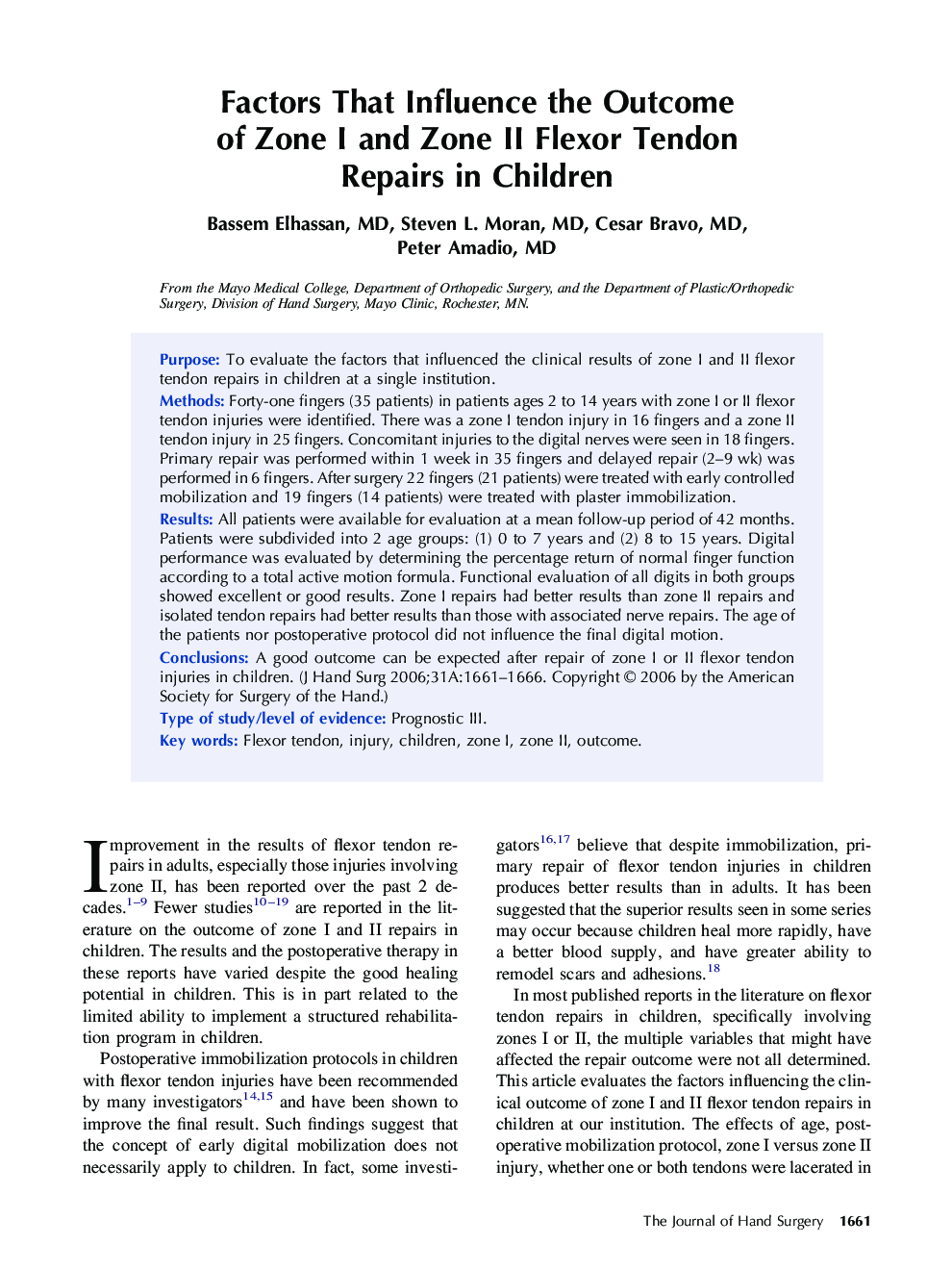| Article ID | Journal | Published Year | Pages | File Type |
|---|---|---|---|---|
| 4071065 | The Journal of Hand Surgery | 2006 | 6 Pages |
PurposeTo evaluate the factors that influenced the clinical results of zone I and II flexor tendon repairs in children at a single institution.MethodsForty-one fingers (35 patients) in patients ages 2 to 14 years with zone I or II flexor tendon injuries were identified. There was a zone I tendon injury in 16 fingers and a zone II tendon injury in 25 fingers. Concomitant injuries to the digital nerves were seen in 18 fingers. Primary repair was performed within 1 week in 35 fingers and delayed repair (2–9 wk) was performed in 6 fingers. After surgery 22 fingers (21 patients) were treated with early controlled mobilization and 19 fingers (14 patients) were treated with plaster immobilization.ResultsAll patients were available for evaluation at a mean follow-up period of 42 months. Patients were subdivided into 2 age groups: (1) 0 to 7 years and (2) 8 to 15 years. Digital performance was evaluated by determining the percentage return of normal finger function according to a total active motion formula. Functional evaluation of all digits in both groups showed excellent or good results. Zone I repairs had better results than zone II repairs and isolated tendon repairs had better results than those with associated nerve repairs. The age of the patients nor postoperative protocol did not influence the final digital motion.ConclusionsA good outcome can be expected after repair of zone I or II flexor tendon injuries in children.Type of study/level of evidencePrognostic III.
